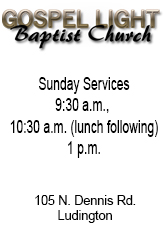 Good Neighbor Tips from Erin Doan, State Farm Insurance, Scottville.
Good Neighbor Tips from Erin Doan, State Farm Insurance, Scottville.
If your home has a wood-burning fireplace or stove, gathering and splitting wood is most likely on your fall to-do list. Get the job done safely this year:
Avoiding Accidents
Splitting logs can send wood pieces airborne, and an accidental slip of the axe can cause serious harm to yourself and others. Learn how to split wood safely:
- Wear the essential safety gear: goggles, gloves and steel-toe shoes.
- Split wood on solid, level ground.
- Keep others out of the area.
- Know how to stop and disengage log splitters quickly.
- Always aim at the front and center of the log — overshooting could cause the handle to hit the log, harming you or your tool.
- Take breaks as you need them.
- Never overexert yourself on a difficult log. Give it more time to dry and then try again. Dry wood is typically easier to split.
- Never wear jewelry or loose clothing. It could get tangled in a log splitter.
Storing Split Wood
Give your wood time to dry before bringing it indoors. Moisture in wood can cause mold and mildew when stored inside. And burning wet wood may release harmful chemicals and particles into the air.
Choose a breezy, sunny location to leave your wood to dry. To promote ventilation and prevent bottom rot, create a base that will hold the wood a few inches off the ground. Then loosely stack the wood and drape a tarp over the pile.
Burning Wood
When starting a fire, use about three split pieces of wood no thicker than 4 to 6 inches. Be sure not to smother the fire as it could increase smoke emissions. Never load up your fireplace with more wood than it’s designed to hold.
Visit the State Farm® Learning Center for more fireplace and chimney safety tips.
The information in this article was obtained from various sources. While we believe it to be reliable and accurate, we do not warrant the accuracy or reliability of the information. These suggestions are not a complete list of every loss control measure. The information is not intended to replace manuals or instructions provided by the manufacturer or the advice of a qualified professional. Nor is it intended to effect coverage under any policy. State Farm makes no guarantees of results from use of this information. We assume no liability in connection with the information nor the suggestions made.


-Mason-County-Press.png)




.png)










































.png)




















